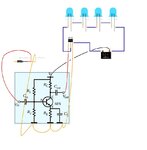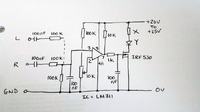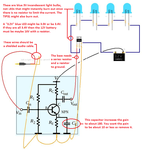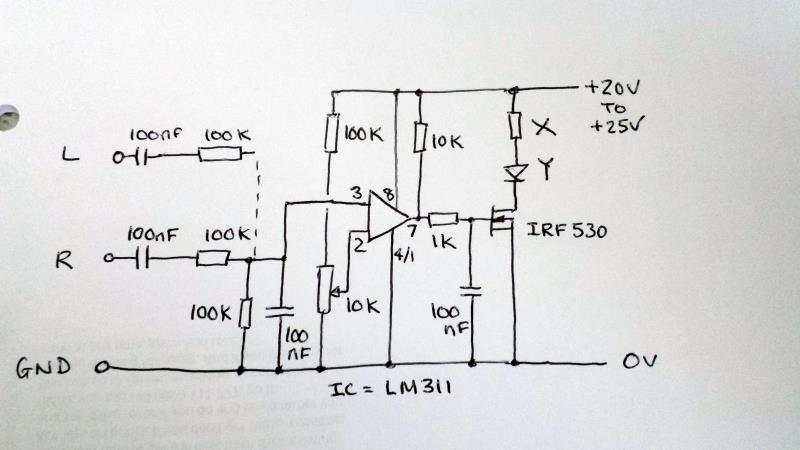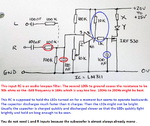Audioguru
Advanced Member level 7

- Joined
- Jan 19, 2008
- Messages
- 9,461
- Helped
- 2,152
- Reputation
- 4,304
- Reaction score
- 2,011
- Trophy points
- 1,393
- Location
- Toronto area of Canada
- Activity points
- 59,764
The Chinese amplifier has 4 volume controls: Volume, Bass Vol, Tre and Tre Vol. I do not know what Tre does.
You can connect a cable to the Bass Vol control to feed the LED circuit.
If the amplifier uses genuine Texas Instruments amplifier ICs then it will give 30W into 4 ohms for the left and right outputs and give 60W into 2 ohms for the bass output. Its spec's say 50W/4 ohms and 100W/2 ohms with horrible 10% distortion.
You can connect a cable to the Bass Vol control to feed the LED circuit.
If the amplifier uses genuine Texas Instruments amplifier ICs then it will give 30W into 4 ohms for the left and right outputs and give 60W into 2 ohms for the bass output. Its spec's say 50W/4 ohms and 100W/2 ohms with horrible 10% distortion.




